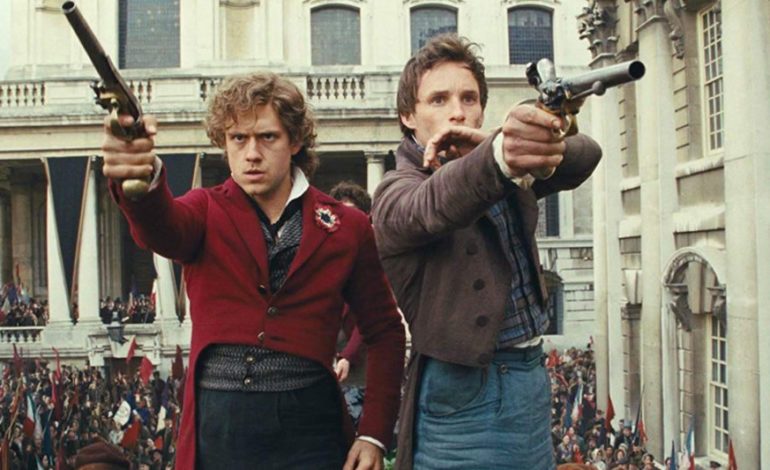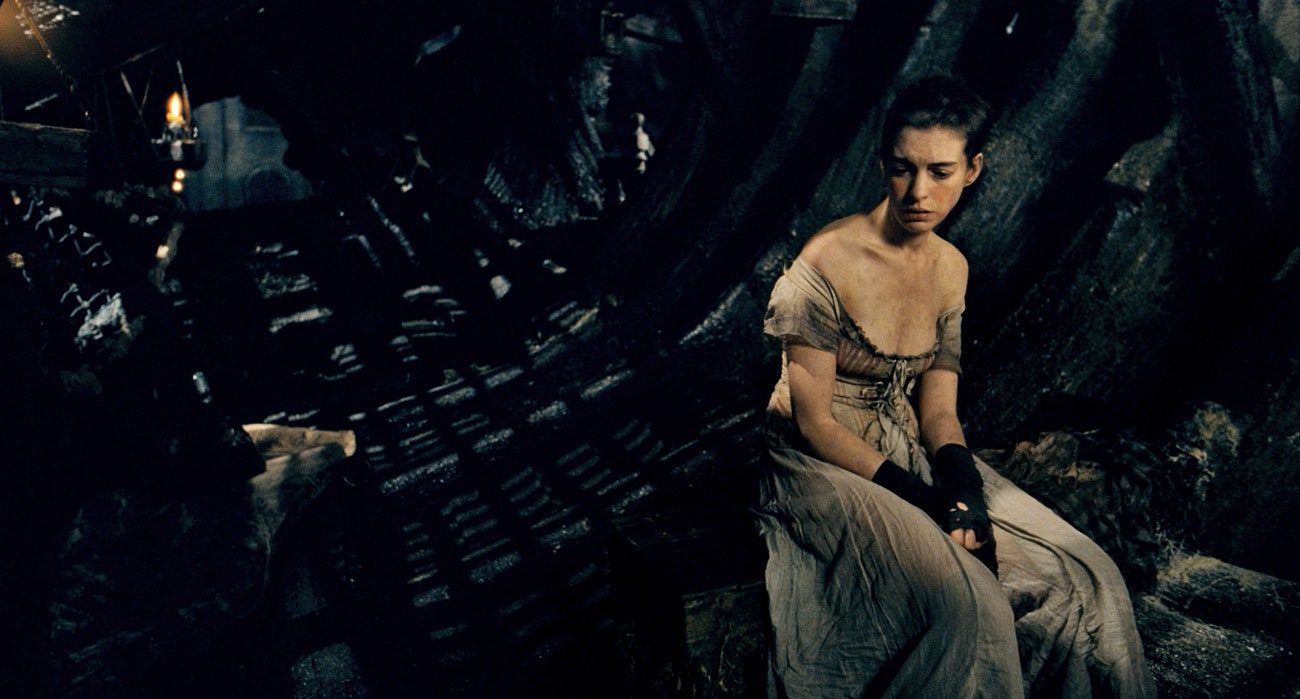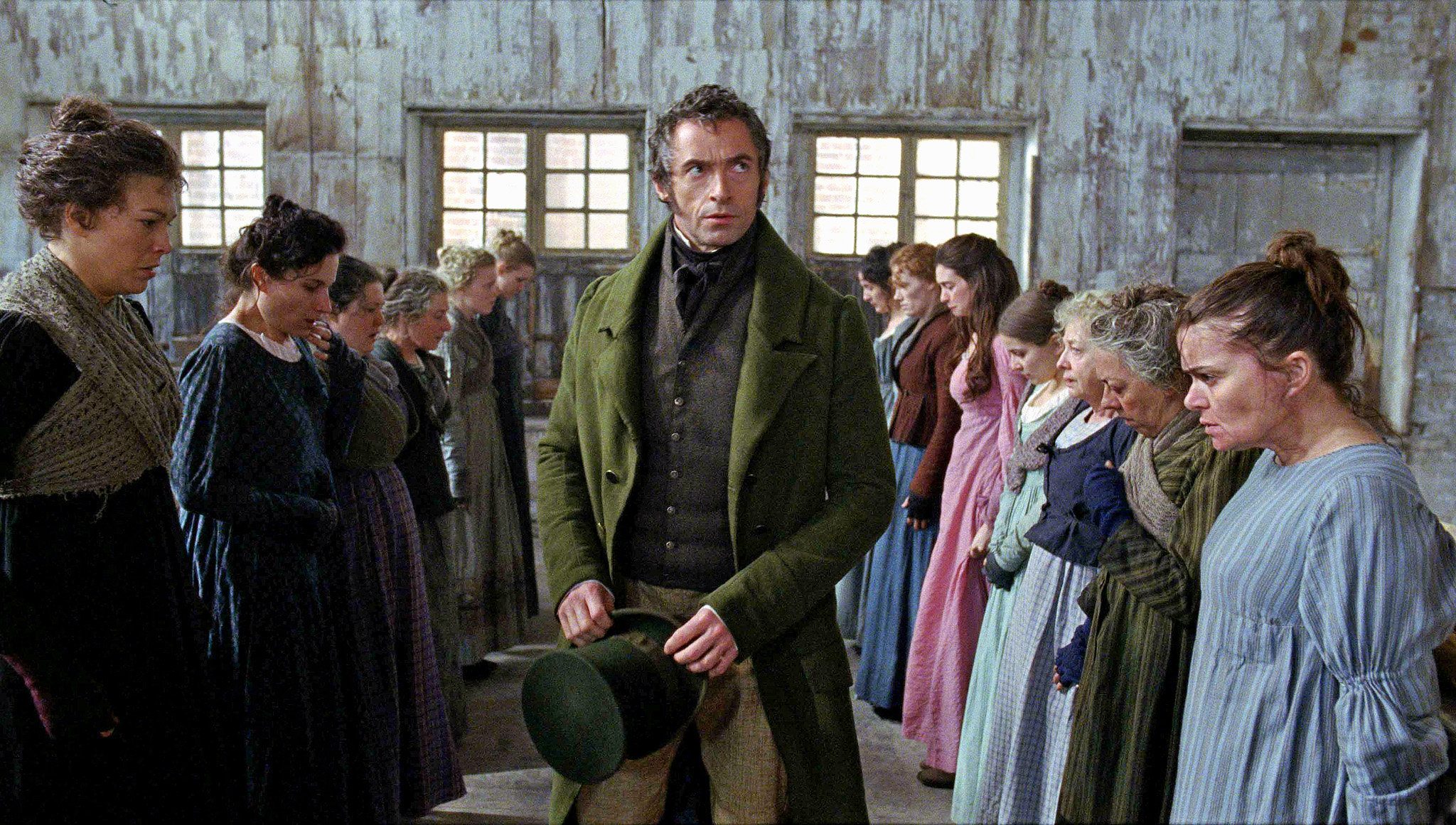

In the 1980s, Broadway saw a huge surge in revenue and publicity with the advent of the “mega musical.” A theater equivalent to the big studio cinematic blockbusters, these shows featured grand soundtracks, long running times, extravagant sets, and a broad appeal that made Broadway more popular than it had ever been. Andrew Lloyd Webber’s Phantom of the Opera and Cats are just two notable examples of the trend but, in 1985, lyricist/composer duo Alain Boublil and Claude-Michel Schönberg burst onto the scene with their grand, sung-through piece, Les Miserables. Adapted from the Victor Hugo novel of the same name, the musical tells the story of ex-convict Jean Valjean and his path to redemption, all the while being pursued relentlessly by police inspector Javert in a story of personal growth intertwined with the people of Paris rising up against their oppressive government.
The show would go on to have lucrative runs on both the West End and Broadway before being turned into a 2012 feature film by director Tom Hooper, of The King’s Speech fame. While Les Miserables has been adapted to film before, Hooper had a unique problem in trying to make something written for the stage musical work on-screen. Despite some surface level similarities, both art forms differ drastically in acting, directing and storytelling techniques. One very surface-level aspect is pace. Traditionally, stage shows are given longer running times which help account for set transitions and costume changes, as well as an intermission to break up the action and give both audiences and performers some breathing room. Film doesn’t have these limitations. Aside from the likes of Titanic, Avengers: Endgame and the Lord of the Rings trilogy, it’s rare that audiences will wait more than two hours for a feature film.
So how does Les Misérables (2012) fair? The film runs just under two hours and 40 minutes compared to the musical’s three hours, not a massive difference in the grand scheme of things but Hooper also adjusts the film’s pace by rearranging the order in which some songs play. The most notable example is “I Dreamed a Dream”, a song of lament sung by Fantine, a poor worker who was been cast out of her job and forced to turn to prostitution. In the stage musical the song occurs right after she’s fired but, in the movie, it’s shortly after she joins the brothel. Placing the song here not only makes the tragic lyrics hit harder, but also gives the film a more natural flow that builds to the show stopping numbers. This change allows the film to take its time and feel less claustrophobic.


Hooper doesn’t always knock it out of the park though. The addition of a new original song, “Suddenly” feels incredibly out of place. Not only does it break up the flow of the movie, it’s a song clearly written well after the fact despite having the original lyricist and composer involved. The film also rearranges songs in such a way that three of its biggest numbers, “On My Own”, “One Day More”, and “Do You Hear the People Sing” all play very close to each other in the middle. These songs are close in the stage show as well, but feature more scenes in-between for a better flow. Here, it feels more like three big disconnected set pieces.
One obvious difference with cinema is the use of a camera. Stage sets are beholden to the venue and must be designed in such a way that everyone can see what’s going on. Film has no such problems and can put the focus anywhere, allowing audiences to see things that could never happen in a traditional theater space. Unfortunately the film stumbles a bit in this regard. Hooper, in an effort to portray emotions and feelings that can’t normally be shown on stage, opts for a film full of close-ups. On occasion this works to great effect. The aforementioned “I Dreamed a Dream” is done in one take and Anne Hathaway (Fantine) delivers a truly stunning performance. Other times, however, the close-ups are used during big songs which don’t match the tone of what’s being shown on screen.
While this technique works for the more intimate moments, part of Les Misérables’ stage allure was its grandiose style and presentation. The frequent close-ups, combined with abundant shaky cam and grimy sets give the film a very bleak and “dirty” feel that appears both claustrophobic and constrained. This was done to give the film a more realistic tone and while this idea has merit, the stage musical is inherently theatrical and bombastic in its presentation, which doesn’t mesh well with claustrophobic cinematography. The result is a half measure of a film that couldn’t decide if it wanted to be a gritty historical drama or a grand musical, resulting in a film that doesn’t quite live up to the standards of either.


Perhaps the most contentious aspect of the film comes from its musical performances, which were delivered live on set rather than recorded in a studio and lip synced. This was another driving force in Hooper’s decision to have so much of the camera zoomed in on people’s faces to show just how “real” it all looked. Of course, opinions of the actors’ singing are subjective and will vary from person to person, but most agree that not everyone gave landmark performances. Anne Hathaway, Samantha Barks (Eponine), and Aaron Tveit (Enjolras) are usually considered the strongest of the cast, with Hathaway winning an Academy Award and the latter two having extensive backgrounds in stage musicals. The most contentious performance, by comparison, is Russel Crowe’s Javert, who most viewers agree was the weakest singer and didn’t bring the eloquence or power to songs like “Stars” and “Javert’s Suicide.” Others cite this imperfect singing as another point for Hooper’s attempt at realism, but that’s debatable.
All of this, however, is part of a larger discussion on the nature of casting in movie musicals. This isn’t exclusive to Les Misérables, as many musicals have been called out for seemingly focusing on big names to draw crowds over lesser known people who could sing the part better (i.e. Emma Watson in Beauty and the Beast). It becomes a question of art vs profit and often may not even be in the director’s control. Studios have observed that big names draw crowds and, whether from a lack of confidence in musicals or simply a desire to maximize profits, they attach big name actors to their projects.
This isn’t a hard and fast rule obviously. Plenty of well-known film actors are just as capable of singing- just look at Hugh Jackman. However, early 20th century movie musicals often had singers dub the musical numbers, allowing the famous actor to perform but have a more accomplished voice to cover the songs. This practice isn’t done much, if at all, nowadays and would have been at odds for Hooper’s desire for maximum realness.


The end result for Les Miserables is ultimately a mixed bag. Hooper had an incredible task in bringing a beloved musical to the screen and, despite some great intent and stellar performances, the jumbled cinematography combined with inconsistent musical quality results is a film that feels like a far cry from the majesty of the original stage show. Despite this, Les Miserables is still beloved by many and garnered plenty of critical buzz, neither of which can be said for Hooper’s recent “film” Cats. The movie musical is something of a dying art and it remains to be seen how future endeavors will play out with regards to handling the source material.
